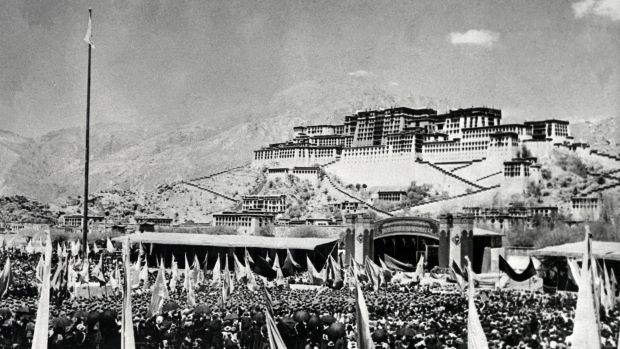The 1959 Tibetan uprising began on this day in 1959, when a revolt erupted in Lhasa, the capital of Tibet, which had been under the effective control of the People’s Republic of China (PRC) since the Seventeen Point Agreement was reached in 1951. The initial uprising occurred amid general Chinese-Tibetan tensions and a context of confusion because Tibetan protesters feared that the Chinese government might kidnap the 14th Dalai Lama and take him to Beijing. This was in the wake of Chinese military officers inviting His Holiness to visit the headquarters of the Chinese People’s Liberation Army (PLA) for a theatrical performance and official tea, and instructing he must come alone, and that no Tibetan military bodyguards or personnel would be allowed past the edges of the military camp. Over 300,000 loyal Tibetans surrounded Norbulinka Palace, preventing the Dalai Lama from accepting the PLA’s invitation.
The protests were also fuelled by anti-Chinese sentiment and separatism. At first, the uprising mostly consisted of peaceful protests, but clashes quickly erupted and PLA eventually used force to quell the protests, some of the protesters had captured arms. The last stages of the uprising included heavy fighting, with high civilian and military losses. The 14th Dalai Lama escaped from Lhasa, while the city was fully retaken by Chinese security forces on March 23, 1959. Thousands of Tibetans were killed during the uprising, but the exact number of deaths is disputed.
China’s occupation of Tibet began nearly a decade before, in October 1950, when troops from its PLA invaded the country, barely one year after the Communists gained full control of mainland China. The Tibetan government gave into Chinese pressure the following year, signing a treaty that ensured the power of His Holiness the Dalai Lama, the country’s spiritual leader, over Tibet’s domestic affairs. Resistance to the Chinese occupation built steadily over the next several years, including a revolt in several areas of eastern Tibet in 1956. By December 1958, the rebellion was simmering in Lhasa, the capital and the PLA command threatened to bomb the city if the order was not maintained.
China’s stranglehold on Tibet and its brutal suppression of separatist activity has continued in the decades following the unsuccessful uprising. Tens of thousands of Tibetans followed their leader to India, where the Dalai Lama has long maintained a government-in-exile in the foothills of the Himalayas.
-Wikipedia/history.com
Photo Caption – On March 10, 1959, Tibetans band together in revolt, surrounding the summer palace of the Dalai Lama in defiance of Chinese occupation forces – AFP via Getty Images



Comments are closed, but trackbacks and pingbacks are open.